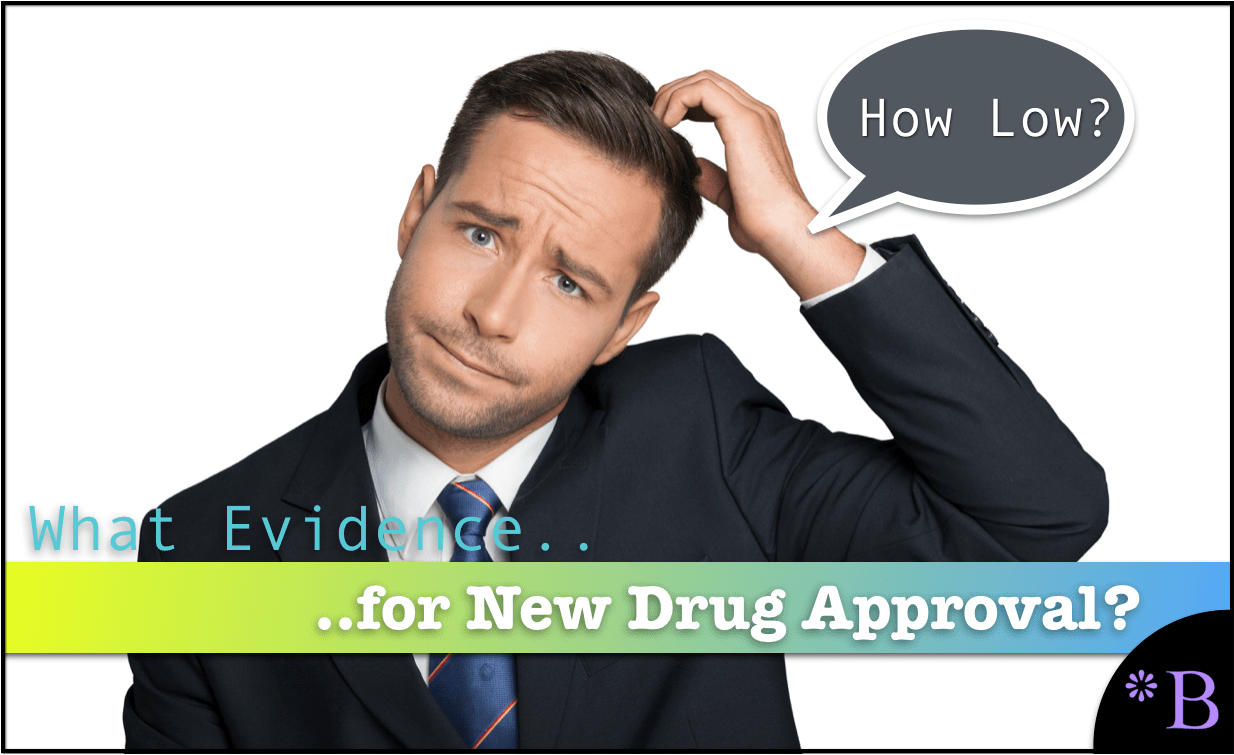How Low Are the FDA’s Standards of Evidence for New Drug Approval?
Executive Summary
- There is a great misunderstanding about what standard the FDA uses for new drug approval.
- We cover the standard they use and the implications.

Introduction
Since its inception, “FDA approved” has carried much meaning. Little known are the basic standards the FDA uses to approve a new drug. Pharmaceutical companies leverage this lack of knowledge to trick the public regarding the effectiveness and safety of drugs.
Our References for This Article
If you want to see our references for this article and related Brightwork articles, visit this link.
The History of the FDA
The history of the FDA is quite interesting and a great jumping-off point to evaluate the modern standards employed by the FDA in drug testing.
A few quotes from the FDA’s website tell the agency’s history.
The Food and Drug Administration is the oldest comprehensive consumer protection agency in the U. S. federal government. Since 1848 the federal government has used chemical analysis to monitor the safety of agricultural products — a responsibility inherited by the Department of Agriculture in 1862 and later by the FDA.
Although it was not known by its present name until 1930, FDA’s modern regulatory functions began with the passage of the 1906 Pure Food and Drugs Act, a law a quarter-century in the making that prohibited interstate commerce in adulterated and misbranded food and drugs.
And from Wikipedia.
In June 1906, President Theodore Roosevelt signed into law the Food and Drug Act, also known as the “Wiley Act” after its chief advocate.[1] The Act prohibited, under penalty of seizure of goods, the interstate transport of food which had been “adulterated,” with that term referring to the addition of fillers of reduced “quality or strength,” coloring to conceal “damage or inferiority,” formulation with additives “injurious to health,” or the use of “filthy, decomposed, or putrid” substances. The new law significantly increased federal regulatory authority over drugs by mandating a pre-market review of the safety of all new drugs, as well as banning false therapeutic claims in drug labeling without requiring that the FDA prove fraudulent intent.
What comes across very clearly is the enormous amount of lying and unsafe products to the public by private companies.
This historical insight should not be lost on the public. Only the government can be brought to bear on private companies to either provide accurate information or safe products.
As I will show, the objective of private companies since the precursor to the FDA was created under the Department of Agriculture has been to corrupt the agency to sell products that do not work, products that are unsafe, and sold based on false claims.
Wikipedia continues.
After passage of the 1938 Act, the FDA began to designate certain drugs as safe for use only under the supervision of a medical professional, and the category of “prescription-only” drugs was securely codified into law by the 1951 Durham-Humphrey Amendment.[1] While pre-market testing of drug efficacy was not authorized under the 1938 FD&C Act, subsequent amendments such as the Insulin Amendment and Penicillin Amendment did mandate potency testing for formulations of specific lifesaving pharmaceuticals.[8]
This did a few important things.
- First, it brought a large amount of business to physicians. The law required you to visit and pay a doctor if you wanted to access certain drugs. It is likely the 1938 act would have been strongly lobbied for by the American Medical Association. Yes, it increased patient safety, but it provided physicians a guaranteed income stream.
- Unfortunately, as time passed, the drug companies could manipulate the doctors into prescribing what the drug company wanted.
Furthermore, the quote explains that “pre-market” testing was still not part of the approval process in 1938. This means that many drugs were put on the market and then later had to be removed by the FDA.
Wikipedia continues.
The FDA began enforcing its new powers against drug manufacturers who could not substantiate the efficacy claims made for their drugs, and the United States Court of Appeals for the Ninth Circuit ruling in Alberty Food Products Co. v. United States (1950) found that drug manufacturers could not evade the “false therapeutic claims” provision of the 1938 act by simply omitting the intended use of a drug from the drug’s label. These developments confirmed extensive powers for the FDA to enforce post-marketing recalls of ineffective drugs.
We see very clearly private drug companies attempting to contest that they should have to provide any substantiation for efficacy claims. Think about that for a moment. They fought in court to keep from having to show their products were effective. This provides insight into the mindset of drug companies, which is that they want to sell defective and ineffective medications. The evidence is that they have repeatedly fought in court to do just that.
Pre Capture FDA
This marks a time when drug companies have not yet captured the FDA, and the evidence is its oppositional attitude towards drug companies. Drug companies should be complaining about the FDA. As soon as drug companies praise the FDA or begin talking about their “public-private” partnership, this is when you know the drug companies have captured the FDA. And consequently, the public interest has been sold out. The following support for the FDA by industry should raise suspicions.